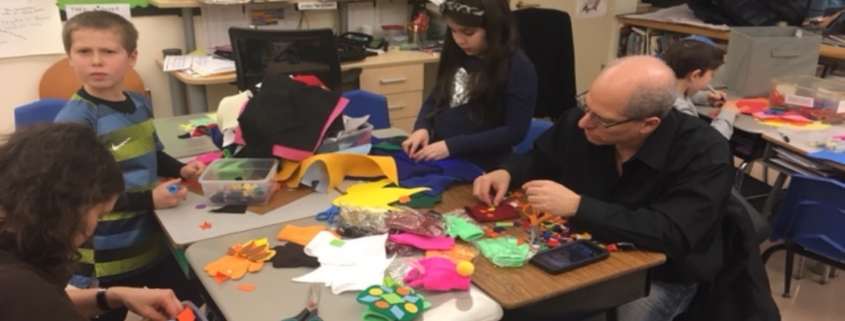Interdisciplinary, Real-World Learning: The Lieberman Family STEAM Center
Our guest columnist is Allison Levine, STEAM Coordinator at Schechter Manhattan.
Often, prospective parents and interested parties who have heard about the Lieberman Family STEAM Center ask questions such as Where in the school is the STEAM Center located? or Could you describe for me what your STEAM Center space looks like?. A simple response to these inquiries would be to share about our impressive Makerspace area in the science classroom, complete with a 3D printer, a multitude of robotics and electronics components, and shelves of building and crafting materials geared to students of all ages. However, the better answer to these questions is that our STEAM Center is so much more than a single physical space relegated to this type of work—and this setup works to our advantage.
In a sense, the Lieberman Family STEAM Center is really a virtual space or infrastructure, designed to promote problem-solving and design-thinking skills, creativity, and interdisciplinary learning. It includes physical spaces like our Makerspace, our format of and approach to instruction, grade-level and schoolwide projects and events, and partnerships with programs and experts from the community.
At Schechter Manhattan, we see STEAM as a multidisciplinary approach to problem-solving and learning about the world around us. STEAM is an acronym for Science, Technology, Engineering, Art, and Math as well as a philosophy that encourages the use of knowledge from one discipline to inform one’s understanding of concepts from other disciplines. We use it every day, in every classroom, to help our students notice cross-curricular connections and to energize them about investigating and solving authentic problems. This type of learning is deeply integrated into many areas of the curriculum—in both general and Jewish studies classes.
Recently, our Gan students completed a STEAM project about keeping parks clean. After completing a hands-on unit about the structures, functions, needs, and importance of trees, Gan students interviewed an employee of the Parks Department to find out what it takes to keep Central Park clean. Through this interview, they learned that one of the challenges that the park’s maintenance staff face is that people throw garbage in the fenced-in tree beds surrounding the park. In response, students designed prototypes of protective barriers, clean-up tools for community use, and creative signage. Throughout the process, students drew upon their knowledge about trees from science, explored measurement through a math lens, employed art and engineering skills, and increased their social awareness and abilities to empathize.
STEAM learning at Schechter Manhattan not only reaches past the boundaries of a single physical space. It extends beyond our school, to include a growing roster of external programs and professionals in the field. This winter, first grade students participated in a program about designing neighborhoods with The Center For Architecture. In addition, members of our STEAM Advisory Committee, made up of past and present Schechter Manhattan parents who work in related fields, have given presentations for our middle school students and have connected us with people working in medicine, technology, engineering, and more.
So this is what the Lieberman Family STEAM Center really is–physical spaces, methodologies and projects, partnerships with programs and experts from the community, and more. As we look to the future, we will continue to seek out new ways and opportunities for our students to experience interdisciplinary learning on a regular basis, engage in authentic problem solving, and gain exposure to STEAM subjects in real-world settings.
Shabbat Shalom.
Allison Levine



